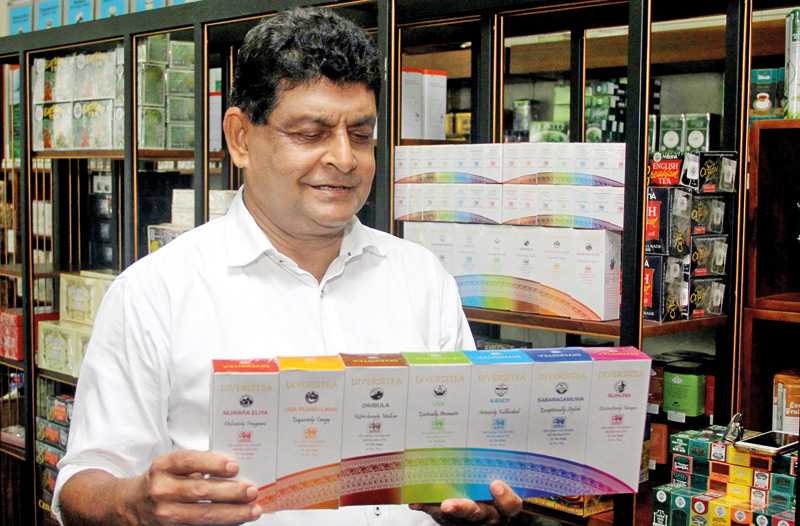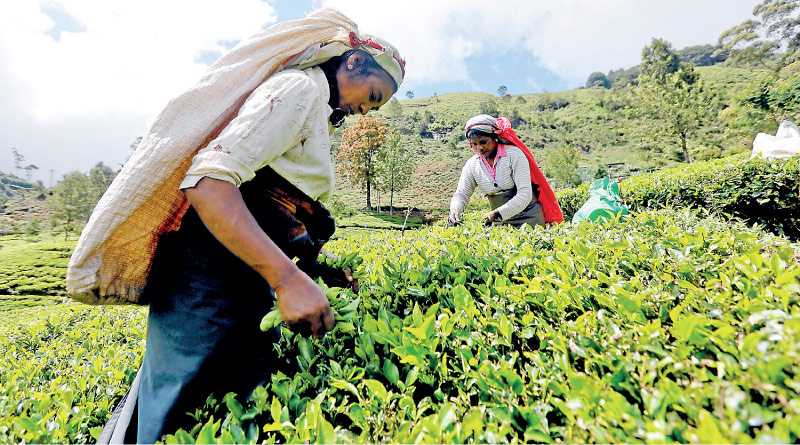Thursday Jan 08, 2026
Thursday Jan 08, 2026
Thursday, 5 November 2020 01:39 - - {{hitsCtrl.values.hits}}

Sri Lanka Tea Board Chairman Jayampathi Molligoda
The Restart Sri Lanka campaign has always spoken about industries that highly contribute to the economy of Sri Lanka. One such industry that has contributed largely to the GDP, especially through exports, is the tea industry, which was once at the top of the world. However, in the current context, what’s the way forward for the tea industry? Sharing his views is none other than Jayampathi Molligoda, current Chairman of Sri Lanka Tea Board.
Molligoda is a member of the Institute of Chartered Accountants of Sri Lanka. He obtained his MBA from the Postgraduate Institute of Management in 1998, and obtained Executive Strategy Credentials from Victoria University, Melbourne. He has four decades of experience in the fields of financial management, strategic planning, human resource development, plantations management and international marketing of tea. He was conferred the Professional Excellence Award at the CIMA National Management Accounting Conference in 2014.
He was with Bogawanthalawa Tea Estates for close to three decades since 1992, where he moved up from planning to finance, CEO, Director and finally to hold the position of Deputy Chairman. He has always been at the forefront of policy review, policy implementation, formulation and comprehensive reports and wining strategies for the tea industries for agriculture and SME developments. Following are excerpts:
Q: In the era before COVID-19 the tea industry was at the top of the world, as the largest exporter at one point. Where does the industry stand at present?
When it comes to the Sri Lankan tea industry, which I would call Ceylon tea, the relative importance in terms of foreign exchange has come down drastically for the past 10 years. However, at the moment, we are number 02 in terms of total foreign exchange, in comparison to other exporting countries. For example, we have earned $ 1.3 billion having exported about 280 million kg. But compared to 2013-2014, when we were producing around 338 million kg per annum, and a foreign exchange revenue of $ 1.6 billion, the present revenue is low. However, Ceylon Tea is globally considered as one of the finest quality teas in the world. Ceylon tea fetches the highest FOB price at any auction, compared to Kenyan tea and Chinese tea.
Kenya is the largest exporter of black tea, reaching upon 490 m kg while we export 280 million kg. China produces 2.8 billion kg, which is mainly green tea. China has expanded their market and are currently exporting more than we do, which is a great challenge. India too produces around 1.3 million kg of black tea but the export quota is less due to the large domestic consumption. The domestic consumption in countries like Sri Lanka is about 20 to 25 m kg.
Q: What were the immediate changes that took place in the industry after the pandemic hit?
The tea export didn’t come to a complete stop, like some other export businesses and commodities. Sri Lanka tea continued the momentum, even with small scale disruptions that did not have a heavy impact. When the concerns about lockdown were raised the first time, the impact was less because the tea industry is about 98% in the hands of the private sector.
If you look at the supply chain we should be proud of our smallholders; these are about 475,000 smallholder units, contributing to 74% of the Ceylon tea production. The balance is produced by the regional plantation companies, amounting to about 20 having fairly large estates. This latter is mainly quoted in the Colombo Stock Exchange. The Government intervention is very minimal, and Government management and ownership is very limited to the extent of maintaining the JDB, the big corporations under the Estate Development Board, the Sri Lankan state plantations and the regional plantation company, Elkaduwa Plantation Ltd. As a result of privatising the plantation growing and manufacturing in 1992, the Government manages a limited number of plantations.
Q: If COVID-19 has not had an impact on the tea industry as others, will it change its ranking in the ladder of GDP earners to the country?
Fortunately, or unfortunately, we went through a drought from November last year up to mid-April this year. When the pandemic hit mid-March, tea production was at rock bottom in Sri Lanka and India. The winter season in India and East Africa hampers tea production largely, and there was a shortfall in the market for exporters to buy tea from the Colombo auction and re-export. By this time, there were orders to be fulfilled. Catalogue of teas takes about three weeks to be sold in the auction from seller to the broker, and we have 50 weekly auctions. But with health situations, the auctions were disrupted for two weeks. So, there was a concern as to whether we had sufficient quantity.
This is when the Government inquired if we could continue with the auctions. We were positive about it, provided that it was given an e-platform. Unfortunately, the Sri Lankan industry was not ready for the automation auction at that time, but fortunately they had studied the Indian models. Therefore, within a week they came up with an e-platform under the direction of the Ceylon Tea Traders’ Association. The first electronic tea auction was successfully held on 4 April, a landmark in the history of over 150 years of Ceylon Tea.
Q: Tea is an integral part in the daily lives of Sri Lankans. When there was a call for lockdown and curfew, people panic bought essential items, which definitely would have included tea. Did the local consumption revenue increase?
We have not done any formal research on it, but to my knowledge, domestic consumption did not reduce during that time, it only increased.
The Sri Lanka Tea Board and the Tea Research Institute was already conducting research about the quality of our tea. Tea is considered a natural drink, which is viewed positively by a growing consumer base who see the goodness of tea. There is a component named Theaflavin, which is high in black tea, but absent in Chinese green tea. According to scientists Theaflavin increases immunity in the body. But I should also add that the best tea still doesn’t come to the local market. Sri Lanka has about 18 brands, but, based on the testing we do with our tea tasters, these brands are still not to the best standard that we expect.
Q: According to you, the tea industry has continued to be strong throughout all this, and has been a pillar to the nation and economy. In your opinion, what can the government do to further help the industry?
Actually, the Government doesn’t interfere or get involved unnecessarily with the operations of the private sector. The tea industry comes under the Ministry of Plantation Industry and Export Agriculture. Many concessions and subsidy schemes have been provided by the government to small holders. The mandate given to the Sri Lanka Tea Board, which comes under the purview of the Ministry of Plantations, is three-fold. Under the development of the Sri Lanka’s tea industry, there are four important divisions; promotion and marketing, regulating the entire supply chain, laboratory services and other related administrative services.
The government depends on Sri Lanka Tea Board to ensure two things; how to support the industry without interference, and using the development of the Sri Lankan Tea Industry. So, the government redirects Rs. 3.50 per kg for the last 10 years to a fund called Promotion and Marketing Levy Fund, and we have about Rs. 7 billion to the credit of this account, which is maintained within the Tea Board Accounting system.
Sri Lankan tea is value added to the tune of 42% of the total production. This means that it also trickles down to the producer, even the estate workers. About 150,000 estate workers are engaged in the industry and they are the real producers, plucking the tea at the correct time and supplying it to the market. We have made ways for exporters to add value and compete in other markets because the negative side of Ceylon Tea is that it is expensive because the cost of production is high.
Q: The most affected would be those in the lowest rung of the ladder. Are they being looked after? And with the threat of a second wave, are you ready for it?
Yes, we are. In fact, the Tea Commissioners Department, the Tea Factory Owners’ Association and the Tea Exporters’ Association have sent out circulars and letters educating them about the need to have stringent health precautionary measures, because we have relaxed to a certain extent. But I must give credit to the plantation Managers and Health Authorities who are supporting the people at the grass root level. They are looked after in terms of the kilos they produce and the money they receive, but it’s not enough.
The entire country can be positive because the tea industry is contributing a whole lot to the cause of Restarting Sri Lanka.
